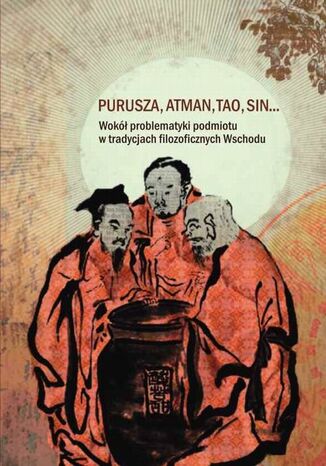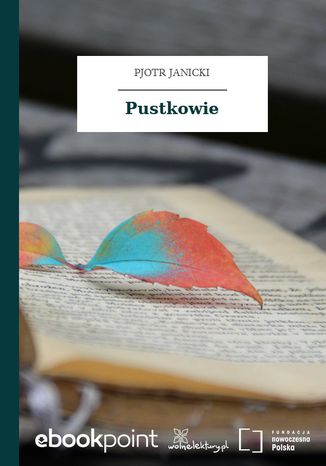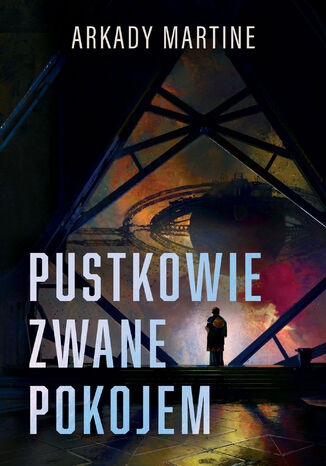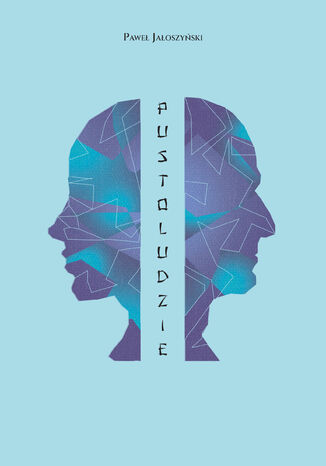Kategorien
E-Books
-
Wirtschaft
- Bitcoin
- Geschäftsfrau
- Coaching
- Controlling
- E-Business
- Ökonomie
- Finanzen
- Börse und Investitionen
- Persönliche Kompetenzen
- Computer im Büro
- Kommunikation und Verhandlungen
- Kleines Unternehmen
- Marketing
- Motivation
- Multimedia-Training
- Immobilien
- Überzeugung und NLP
- Steuern
- Sozialpolitik
- Handbȕcher
- Präsentationen
- Führung
- Public Relation
- Berichte, Analysen
- Geheimnis
- Social Media
- Verkauf
- Start-up
- Ihre Karriere
- Management
- Projektmanagement
- Personal (HR)
-
Für Kinder
-
Für Jugendliche
-
Bildung
-
Enzyklopädien, Wörterbücher
-
E-Presse
- Architektura i wnętrza
- Sicherheit und Gesundheit am Arbeitsplatz
- Biznes i Ekonomia
- Haus und Garten
- E-Business
- Ekonomia i finanse
- Esoterik
- Finanzen
- Persönliche Finanzen
- Unternehmen
- Fotografie
- Informatik
- HR und Gehaltsabrechnung
- Frauen
- Computer, Excel
- Buchhaltung
- Kultur und Literatur
- Wissenschaftlich und akademisch
- Umweltschutz
- meinungsbildend
- Bildung
- Steuern
- Reisen
- Psychologie
- Religion
- Landwirtschaft
- Buch- und Pressemarkt
- Transport und Spedition
- Gesundheit und Schönheit
-
Geschichte
-
Informatik
- Office-Programme
- Datenbank
- Bioinformatik
- IT Branche
- CAD/CAM
- Digital Lifestyle
- DTP
- Elektronik
- Digitale Fotografie
- Computergrafik
- Spiele
- Hacking
- Hardware
- IT w ekonomii
- Wissenschaftliche Pakete
- Schulbücher
- Computergrundlagen
- Programmierung
- Mobile-Programmierung
- Internet-Server
- Computernetzwerke
- Start-up
- Betriebssysteme
- Künstliche Inteligenz
- Technik für Kinder
- Webmaster
-
Andere
-
Fremdsprachen lernen
-
Kultur und Kunst
-
Lektüre
-
Literatur
- Anthologien
- Ballade
- Biografien und Autobiografien
- Für Erwachsene
- Drama
- Tagebücher, Memoiren, Briefe
- Epos
- Essay
- Science Fiction
- Felietonys
- Fiktion
- Humor, Satire
- Andere
- Klassisch
- Krimi
- Sachbücher
- Belletristik
- Mity i legendy
- Nobelpreisträger
- Kurzgeschichten
- Gesellschaftlich
- Okultyzm i magia
- Erzählung
- Erinnerungen
- Reisen
- Gedicht
- Poesie
- Politik
- Populärwissenschaftlich
- Roman
- Historischer Roman
- Prosa
- Abenteuer
- Journalismus
- Reportage
- Romans i literatura obyczajowa
- Sensation
- Thriller, Horror
- Interviews und Erinnerungen
-
Naturwissenschaften
-
Sozialwissenschaften
-
Schulbücher
-
Populärwissenschaft und akademisch
- Archäologie
- Bibliotekoznawstwo
- Filmwissenschaft
- Philologie
- Polnische Philologie
- Philosophie
- Finanse i bankowość
- Erdkunde
- Wirtschaft
- Handel. Weltwirtschaft
- Geschichte und Archäologie
- Kunst- und Architekturgeschichte
- Kulturwissenschaft
- Linguistik
- Literaturwissenschaft
- Logistik
- Mathematik
- Medizin
- Geisteswissenschaften
- Pädagogik
- Lehrmittel
- Populärwissenschaftlich
- Andere
- Psychologie
- Soziologie
- Theatrologie
- Teologie
- Theorien und Wirtschaftswissenschaften
- Transport i spedycja
- Sportunterricht
- Zarządzanie i marketing
-
Handbȕcher
-
Spielanleitungen
-
Professioneller und fachkundige Leitfaden
-
Jura
- Sicherheit und Gesundheit am Arbeitsplatz
- Geschichte
- Verkehrsregeln. Führerschein
- Rechtswissenschaften
- Gesundheitswesen
- Allgemeines. Wissenskompendium
- akademische Bücher
- Andere
- Bau- und Wohnungsrecht
- Zivilrecht
- Finanzrecht
- Wirtschaftsrecht
- Wirtschafts- und Handelsrecht
- Strafrecht
- Strafrecht. Kriminelle Taten. Kriminologie
- Internationales Recht
- Internationales und ausländisches Recht
- Gesundheitsschutzgesetz
- Bildungsrecht
- Steuerrecht
- Arbeits- und Sozialversicherungsrecht
- Öffentliches, Verfassungs- und Verwaltungsrecht
- Familien- und Vormundschaftsrecht
- Agrarrecht
- Sozialrecht, Arbeitsrecht
- EU-Recht
- Industrie
- Agrar- und Umweltschutz
- Wörterbücher und Enzyklopädien
- Öffentliche Auftragsvergabe
- Management
-
Führer und Reisen
- Afrika
- Alben
- Südamerika
- Mittel- und Nordamerika
- Australien, Neuseeland, Ozeanien
- Österreich
- Asien
- Balkan
- Naher Osten
- Bulgarien
- China
- Kroatien
- Tschechische Republik
- Dänemark
- Ägypten
- Estland
- Europa
- Frankreich
- Berge
- Griechenland
- Spanien
- Niederlande
- Island
- Litauen
- Lettland
- Mapy, Plany miast, Atlasy
- Miniführer
- Deutschland
- Norwegen
- Aktive Reisen
- Polen
- Portugal
- Andere
- Przewodniki po hotelach i restauracjach
- Russland
- Rumänien
- Slowakei
- Slowenien
- Schweiz
- Schweden
- Welt
- Türkei
- Ukraine
- Ungarn
- Großbritannien
- Italien
-
Psychologie
- Lebensphilosophien
- Kompetencje psychospołeczne
- zwischenmenschliche Kommunikation
- Mindfulness
- Allgemeines
- Überzeugung und NLP
- Akademische Psychologie
- Psychologie von Seele und Geist
- Arbeitspsychologie
- Relacje i związki
- Elternschafts- und Kinderpsychologie
- Problemlösung
- Intellektuelle Entwicklung
- Geheimnis
- Sexualität
- Verführung
- Aussehen ind Image
- Lebensphilosophien
-
Religion
-
Sport, Fitness, Diäten
-
Technik und Mechanik
Hörbücher
-
Wirtschaft
- Bitcoin
- Geschäftsfrau
- Coaching
- Controlling
- E-Business
- Ökonomie
- Finanzen
- Börse und Investitionen
- Persönliche Kompetenzen
- Kommunikation und Verhandlungen
- Kleines Unternehmen
- Marketing
- Motivation
- Immobilien
- Überzeugung und NLP
- Steuern
- Sozialpolitik
- Handbȕcher
- Präsentationen
- Führung
- Public Relation
- Geheimnis
- Social Media
- Verkauf
- Start-up
- Ihre Karriere
- Management
- Projektmanagement
- Personal (HR)
-
Für Kinder
-
Für Jugendliche
-
Bildung
-
Enzyklopädien, Wörterbücher
-
E-Presse
-
Geschichte
-
Informatik
-
Andere
-
Fremdsprachen lernen
-
Kultur und Kunst
-
Lektüre
-
Literatur
- Anthologien
- Ballade
- Biografien und Autobiografien
- Für Erwachsene
- Drama
- Tagebücher, Memoiren, Briefe
- Epos
- Essay
- Science Fiction
- Felietonys
- Fiktion
- Humor, Satire
- Andere
- Klassisch
- Krimi
- Sachbücher
- Belletristik
- Mity i legendy
- Nobelpreisträger
- Kurzgeschichten
- Gesellschaftlich
- Okultyzm i magia
- Erzählung
- Erinnerungen
- Reisen
- Poesie
- Politik
- Populärwissenschaftlich
- Roman
- Historischer Roman
- Prosa
- Abenteuer
- Journalismus
- Reportage
- Romans i literatura obyczajowa
- Sensation
- Thriller, Horror
- Interviews und Erinnerungen
-
Naturwissenschaften
-
Sozialwissenschaften
-
Populärwissenschaft und akademisch
- Archäologie
- Philosophie
- Wirtschaft
- Handel. Weltwirtschaft
- Geschichte und Archäologie
- Kunst- und Architekturgeschichte
- Kulturwissenschaft
- Literaturwissenschaft
- Mathematik
- Medizin
- Geisteswissenschaften
- Pädagogik
- Lehrmittel
- Populärwissenschaftlich
- Andere
- Psychologie
- Soziologie
- Teologie
- Zarządzanie i marketing
-
Handbȕcher
-
Professioneller und fachkundige Leitfaden
-
Jura
-
Führer und Reisen
-
Psychologie
- Lebensphilosophien
- zwischenmenschliche Kommunikation
- Mindfulness
- Allgemeines
- Überzeugung und NLP
- Akademische Psychologie
- Psychologie von Seele und Geist
- Arbeitspsychologie
- Relacje i związki
- Elternschafts- und Kinderpsychologie
- Problemlösung
- Intellektuelle Entwicklung
- Geheimnis
- Sexualität
- Verführung
- Aussehen ind Image
- Lebensphilosophien
-
Religion
-
Sport, Fitness, Diäten
-
Technik und Mechanik
Videokurse
-
Datenbank
-
Big Data
-
Biznes, ekonomia i marketing
-
Cybersicherheit
-
Data Science
-
DevOps
-
Für Kinder
-
Elektronik
-
Grafik / Video / CAX
-
Spiele
-
Microsoft Office
-
Entwicklungstools
-
Programmierung
-
Persönliche Entwicklung
-
Computernetzwerke
-
Betriebssysteme
-
Softwaretest
-
Mobile Geräte
-
UX/UI
-
Web development
-
Management
Podcasts
"Purpurowa nić" to powieść o miłości i zdradzie, o zwątpieniu i nadziei, o rozstaniu i powrotach... Życie Sierry Madrid miało być sielanką. Wspaniały mąż. Cudowne dzieci. I pomyślne widoki na przyszłość. Ale czasami powracały we wspomnieniach Sierry słowa jej ojca: "Zobaczysz, że przez tego chłopaka będziesz jeszcze płakać!" Wtedy nie chciała w nie wierzyć, teraz zaś Alex, jej mąż, nie pozwalał o nich zapomnieć. Nagle ten doskonale poukładany świat, konstruowany z marzeń i snów, rozsypał się jak domek z kart... "Spotkanie z tą książką to dla mnie wielka odkrywcza przygoda polegająca na poznaniu wewnętrznej dynamiki małżeństwa i wewnętrznego rozwoju zarówno mężczyzny, jak i kobiety. Ten rozwój, ta progresja możliwe są tylko dzięki Chrystusowi. Polaryzacja egoizmów prowadzi do destrukcji. W miarę zbliżania się do Jezusa bohaterowie odkrywają w jakim stopniu sami dla siebie stają się przeszkodą w rozwoju." O. Jan Góra Francine Rivers, jedna z najpopularniejszych powieściopisarek amerykańskich. Autorka licznych bestsellerów, m.in. nagrodzonego wyróżnieniem Golden Medallion Award cyklu Mark of the Lion (Znamię Lwa), na który składają się trzy powieści: (Głos w wietrze, Echo w ciemności, Jak świt poranka), przenoszące czytelnika w świat starożytnego Rzymu. Poza tą trylogią, która zdobyła miliony czytelników w samych Stanach, znakomicie przyjęte przez krytyków zostały także powieści: "Szofar zabrzmiał", "Ostatni zjadacz grzechu" oraz "Dziecko pokuty".
Lęk przed stratą bywa tak samo bolesny jak strata... Nie wiadomo kiedy Alija z brzydkiego kaczątka zmieniła się w prawdziwą piękność. Wychowanka Karima Kasymowa spędza całe dnie w jego luksusowej willi jako pokojówka, ale przede wszystkim wierna przyjaciółka Fabiany, ukochanej Chana. Młoda muzułmanka coraz częściej odczuwa jednak samotność, a kiedy w rezydencji pojawia się nowy ogrodnik, przystojny Michał Chłodny, dociera do niej, że się zakochała i to z wzajemnością. Nie wie, że Michał skrywa mroczny sekret, który determinuje jego postępki. Tyko Radik, zastępca Karima, czuje niechęć do ogrodnika, ale nikt nie bierze na poważnie jego zastrzeżeń, a już na pewno nie zakochana po uszy dziewczyna. Niestety, oni wszyscy słono za to zapłacą. Alija i Fabiana padną ofiarą planów Polaka i trafią w sam środek piekła. Jaką rolę w dramacie odegra Ksenia, córka Dżamili? Kim naprawdę jest Michał Chłodny? I co sprawi, że Alija znajdzie się w miejscu, skąd nie ma żadnego wyjścia poza tym ostatecznym?
Wisła połyskiwała w blasku wschodzącego słońca. Stolica budziła się do życia, a wraz z nią tysiące mieszkańców. Upalne lato dawało się we znaki wszystkim. Rozgrzane ciała spływały potem zmieszanym z najdroższymi perfumami. Ada czuła, jak jej ciało rozpala coś więcej niż gorący powiew wiatru. Nie spodziewała się, że jedna podróż metrem może doprowadzić ją na szczyt rozkoszy. A to dopiero początek... Zmysłowa opowieść o erotycznych doznaniach bohaterki skąpanej w warszawskim słońcu. Przygotuj się na dreszcze ekscytacji i ciepło rozlewające się po całym ciele.
Ada i Zbigniew, mimo że są małżeństwem od kilku lat, wciąż pragną się tak, jak pierwszego dnia znajomości. W drugiej części opowieści lądujemy w ich wykwintnym apartamencie z lustrem nad łóżkiem, by następnie dowiedzieć się, jak zdołali się odnaleźć w tłumie przypadkowych ludzi. Już wówczas połączył ich zwierzęcy magnetyzm.
Purusza Atman Tao Sin. Wokół problematyki podmiotu w tradycjach filozoficznych Wschodu
Ołena Łucyszyna, Maciej St. Zięba
W ramach niniejszej pracy przyjrzymy się, jak pojmują podmiot różni myśliciele dwóch cywilizacji orientalnych: indyjskiej i dalekowschodniej. Przewodnikiem naszym będą terminy kluczowe występujące w tytule książki, zaczerpnięte z ich dzieł. Dla cywilizacji indyjskiej będą nimi 'purusza' osoba, człowiek oraz 'atman' się, ja, duch; dla cywilizacji dalekowschodniej 'tao', czyli droga, oraz 'sin' serce, umysł. Artykuły zostały ułożone w taki sposób, by ukazać rozwój wskazanych pojęć oraz uchwycić toczące się wokół nich debaty. Zwłaszcza debata buddyzmu z różnymi szkołami i nurtami ortodoksyjnej myśli bramińskiej oraz debata buddyzmu i taoizmu ze szkołami konfucjańskimi na Dalekim Wschodzie przyczyniły się do rozwoju wschodnich pojęć podmiotowości (drugi i trzeci rozdział książki). Współczesny rozwój tych pojęć odbywa się już w kontakcie z myślą zachodnią (trzeci rozdział pracy).
Puste naczynia. Studia z filozofii współczesnej
Przez ostatnich sto pięćdziesiąt lat w filozofii zaszły olbrzymie zmiany, dotyczące nie tylko poruszanych przez nią tematów, ale również sposobu jej uprawiania. Ta przeważnie prywatna i swobodna refleksja ludzi kierowanych naturalną ciekawością i potrzebą badania fundamentalnych zagadnień stopniowo przekształciła się w zwyczajną profesję, uprawianą pod patronatem i nadzorem instytucji, najczęściej państwowych, ocenianą i wynagradzaną niczym praca etatowych urzędników. Choć liczba publikacji filozoficznych stale rośnie, chociaż mnożą się rankingi i listy specjalistycznych czasopism oraz wydawnictw, jakość tej produkcji jest coraz słabsza i z pewnością nie ponadczasowa. Zwykły człowiek, który oczekiwałby przynajmniej prób odpowiedzi na tradycyjne filozoficzne pytania, może poczuć się zawiedziony, a ktoś, kto zna klasyków – znudzony i poirytowany. Jeśli od razu nie spotka się z deklaracją, że tradycyjne pytania są przestarzałe, będzie miał do czynienia albo z ubranymi w uczony żargon banałami, albo mętnymi zaklęciami, albo scjentystyczną paplaniną, małpującą metody i język nauk przyrodniczych lub społecznych. Jeśli dodamy do tego wszechobecne myślenie proceduralne, znajdujące wyraz w tym, że ludzie rozumują i wyrażają się tak, jak sztuczna inteligencja, okaże się, że w tej intrygującej epoce, w której żyjemy, myśl filozoficzna przeżywa głęboki regres. Zebrane w tym tomie teksty są próbą odpowiedzi na pytania o źródła i naturę kryzysu filozofii. Odpowiadając na nie, autor rozważa założenia i wartości leżące u podstaw powszechnie dziś przyjmowanego obrazu świata, technokratyczne i demokratyczne przesądy, których nie tylko nie kwestionuje się, ale zwykle nie dostrzega, a także automatycznie uznawane autorytety, kontrolujące przekaz informacji. Refleksja nad tymi zjawiskami pozwala zrozumieć, dlaczego tak rzadką postawą są dziś w filozofii sokratejska krnąbrność i sceptyczny dystans.
Piąty tom porywającej wiejskiej sagi inspirowanej historią rodzinną autorki. Tynczyn zasnuły ponure chmury okupacji. W nowej rzeczywistości ludzie przekonują się, że tak, jak nie należy wracać do przeszłości, tak i o przyszłość lepiej nie pytać. Trzeba się skupić jedynie na tym, jak przetrwać. Każdego wieczoru pojawia się strach, czy nazajutrz znów uda się przeżyć. Kolejne dni są jak ochłapy wyrwane z zakrwawionych zębów losu. Młodzi mieszkańcy Tynczyna nie wiedzą jeszcze wszystkiego o sobie, a już muszą zdawać egzamin z dojrzałości, przyzwoitości, patriotyzmu. Codziennie tracą nadzieję i na nowo ją odzyskują. Wojna zmusza ich do podejmowania decyzji, których nigdy by nie podjęli, do wybierania dróg, którymi nigdy by nie poszli. Gdy wojenny kurz opadnie, będą musieli spojrzeć sobie w oczy i odpowiedzieć na pytanie, jakimi ludźmi są teraz. Kasia Bulicz-Kasprzak - choć dziś mieszka w mieście, od lat jest związana ze wsią; od pokoleń chłopka, właścicielka niewielkiego gospodarstwa na Zamojszczyźnie. Potrafi doić krowy, prowadzić ciągnik. Odróżnia zboża jare od ozimych i zna tajniki uprawy buraków cukrowych. Niezmiennie fascynuje ją polska wieś, jej specyficzny klimat i relacje między mieszkańcami. Pisarka, matka, gospodyni
Burzliwe losy Fabrycy'ego del Dongo, który mimo że młody, piękny i bogaty, przeżywa tragiczny konflikt. Jego ojciec nie potrafi zaakceptować uwielbienia, jakim syn darzy postać Napoleona - do tego stopnia, że wyrzeka się swojego potomka. Fabrycy rekompensuje sobie brak ojcowskiego zaangażowania poprzez wikłanie się w coraz to nowe relacje romantyczne i erotyczne. Kłopoty wytrawnego uwodziciela rozpoczynają się wtedy, gdy dopada go uczucie szczerej miłości. Wymyślne intrygi, skomplikowane charakterologicznie postaci i zaskakujące zwroty akcji! Nic dziwnego, że w 1948 r. powieść została przeniesiona na srebrny ekran przez Christiana-Jaque'a.
- Nie masz się co tak śpieszyć, żołnierzyku - rzekła markietanka, wzruszona bladością i ładnymi oczami Fabrycego. - Nie masz dość tęgiej garści na dzisiejszą młockę. Gdybyś jeszcze miał fuzję, nie mówię: mógłbyś z niej wygarnąć nie gorzej od innych. (Fragment)
Pełna intryg, napięcia i niedomówień opowieść o miłości. Główny bohater, Fabryc del Dongo, zostaje odrzucony i wydziedziczony przez własnego ojca z powodu odmiennych poglądów politycznych. Chłopak przyzwyczajony do wystawnego życia i kontaktu z ojcem czuje się zagubiony i nieszczęśliwy. Szuka pocieszenia wśród znanych sobie kobiet. Powieść idealnie oddaje klimat dworski przełomu XVIII i XIX wieku.
“Pustelnia parmeńska” to powieść Stendhala, słynnego francuskiego pisarza epoki romantyzmu oraz prekursora realizmu w literaturze. W powieści tej Stendhal opowiada dzieje Fabrycego del Dongo - młodszego syna mediolańskiego arystokraty i bogacza. Fabrycy, nie mogąc znaleźć w rodzinnym domu szczęścia i miłości, ucieka z Italii i przyłącza się do armii Napoleona. Bierze udział w bitwie pod Waterloo.
Pustelnia parmeńska Od tłumacza Wydając niedawno po polsku Czerwone i czarne Stendhala, poprzedziłem tę książkę krótkim życiorysem oraz charakterystyką pisarza; nie będę tedy powtarzał tych ogólnych rysów, dodam jedynie kilka słów odnoszących się do samej Pustelni parmeńskiej. Ukazała się ona drukiem w r. 1839, jako ostatni większy utwór Stendhala, pomyślana została jednakże już w r. 1832, tuż po Czerwonym i czarnym. I w istocie czuć, iż oba utwory wyrosły z jednej epoki duchowego życia pisarza, tyle odnajdujemy w nich wspólności. Wspólność — ale raczej wewnętrzna; na pozór znajdujemy się w zupełnie innym świecie. Tam Francja, tu Włochy; tam bohaterem powieści jest ambitny plebejusz, tu spieszczony arystokrata... Mimo to twórczość Stendhala jest — przy pozorach suchego obiektywizmu — tak osobista, iż znów trzeba nam w nim samym poszukać komentarza do tej Pustelni parmeńskiej. Przypomnijmy go sobie w r. 1800, kiedy jako siedemnastoletni chłopak pierwszy raz dosiada konia, aby w ślad za krewniakiem swym, Daru, podążyć do Włoch za armią Bonapartego. Młody Beyle dostaje się do Mediolanu, a siła tych pierwszych upojeń, które znalazł na ziemi włoskiej, jako jedna z żywych głosek wspaniałego rapsodu, który się tam rozgrywał, jest taka, iż w trzydzieści lat później wspomnienie ich starczy, aby mu podyktować karty rozpoczynające Pustelnię parmeńską, jedne z najgorętszych, najbardziej świeżych, jakie kiedy wyszły spod jego pióra. [...]StendhalUr. 23 stycznia 1783 w Grenoble Zm. 23 marca 1842 w Paryżu Najważniejsze dzieła: Czerwone i czarne, Lamiel, Pustelnia parmeńska, Kroniki włoskie, Pamiętnik egotysty Właśc. Marie-Henri Beyle. Powieściopisarz francuski doby romantyzmu, twórca realistycznych powieści łączących wątki psychologiczne, obyczajowe i romansowe oraz szkiców z zakresu historii sztuki i literatury. Służył w armii Napoleona I aż do odwrotu spod Moskwy; był żarliwym obrońcą pamięci Cesarza Francuzów. Serdecznie związany z Włochami i ich kulturą, napisał kilka szkiców na temat sztuki włoskiej (Historia malarstwa we Włoszech, 1817; przewodnik po Rzymie, Neapolu i Florencji), a na swym nagrobku kazał nazwać się ,,Mediolańczykiem".Kupując książkę wspierasz fundację Nowoczesna Polska, która propaguje ideę wolnej kultury. Wolne Lektury to biblioteka internetowa, rozwijana pod patronatem Ministerstwa Edukacji Narodowej. W jej zbiorach znajduje się kilka tysięcy utworów, w tym wiele lektur szkolnych zalecanych do użytku przez MEN, które trafiły już do domeny publicznej. Wszystkie dzieła są odpowiednio opracowane - opatrzone przypisami oraz motywami.
Dzieje Fabrycego del Dongo – młodszego syna mediolańskiego arystokraty i bogacza, który odrzuca syna, ponieważ ten przejawia fascynację Napoleonem. Brak miłości ojcowskiej z nawiązką rekompensują Fabrycemu kobiety, od ukochanej ciotki, przez markietanki, aktorki i właściwie wszystkie, które spotyka na swej drodze. Stendhal cudownie plecie burzliwą historię miłości między Fabrycym, hrabiną Sanseverina i córką strażnika więzienia. Znajdziemy w tej opowieści mistrzowskie opisy uczuć, zawiłe intrygi i znakomite portrety psychologiczne. A także opis uroczego świata, którego dawno już nie ma.
Pustelnia parmeńska. La Chartreuse de Parme
"Pustelnia parmeńska. La Chartreuse de Parme. Książka w dwóch wersjach językowych: polskiej i francuskiej. Version bilingue: polonaise et française W powieści tej Stendhal opowiada dzieje Fabrycego del Dongo - młodszego syna mediolańskiego arystokraty i bogacza. Fabrycy, nie mogąc znaleźć w rodzinnym domu szczęścia i miłości ucieka z Italii i przyłącza się do armii Napoleona (wątek autobiograficzny). Bierze udział w bitwie pod Waterloo. Po powrocie przybywa do swej ukochanej ciotki Giny Sanseverina, do Parmy i decyduje się na wybór kariery duchownej. Nie przeszkadza mu to utrzymywać miłosnych stosunków z aktorką Mariettą. Zazdrosny o nią, zabija jej admiratora i musi uciekać z Parmy. Przez jakiś czas przebywa w Bolonii, a kiedy w końcu w tajemnicy wraca do miasta, zostaje zdekonspirowany i uwięziony w wieży Farnese. Tam zakochuje się w Klelii Conti, córce komendanta więzienia. Ta pomaga mu w ucieczce, ale dręczona wyrzutami sumienia ślubuje Bogu, że już nigdy więcej go nie zobaczy, po czym wychodzi za innego. Fabrycy tymczasem zostaje arcybiskupem Parmy. Po latach tłumione uczucie pomiędzy nimi wybucha na nowo, jednak aby nie złamać przysięgi kochankowie spotykają się tylko nocą. Z tego burzliwego związku przychodzi na świat syn, który wkrótce umiera etc. etc. (https://pl.wikipedia.org/wiki/Pustelnia_parmeńska) Laction du roman commence Milan en 1796, par les confidences dun lieutenant français dénommé Robert, qui conte larrivée dans Milan des armées de la Révolution, menée par le jeune Bonaparte. Ces armées réveillent, dans un peuple lombard anesthésié par la tutelle autrichienne, un vieux fond héroque, et sont accueillies avec une gaieté folle par les Milanais dans leur majorité. Le marquis Del Dongo, farouche et grotesque réactionnaire, partisan de lAutriche, se voit contraint daccueillir les soldats français vainqueurs, dont le lieutenant Robert fait partie. mots couverts, le romancier suggre une idylle entre Robert et la jeune marquise Del Dongo, dont le fruit sera Fabrice. Celui-ci passe sa jeunesse dans la tourmente napoléonienne. Installé Grianta, sur le lac de Côme, avec toute sa famille, le jeune homme resserre les liens entre sa mre et sa tante, Gina Del Dongo, laquelle épouse un général italien partisan des Français, qui trouve la mort en 1814. Pendant ce temps, son pre (officiel) et son frre (demi-frre) sont espions pour le compte de labsolutisme autrichien, et triomphent quand, en 1813-1814, les armées napoléoniennes sont vaincues, et que Milan retombe sous la coupe de lempereur dAutriche etc. etc. (https://fr.wikipedia.org/wiki/La_Chartreuse_de_Parme)"
Pustelnik, który dał tytuł tej powieści, to profesor Medard Hruda, obieżyświat, który na koniec, postanowiwszy odmienić swoje życie, zdecydował się zamieszkać w puszczy na Wołyniu, gdzie lecząc ubogich wieśniaków nie stracił jednak kontaktu z wyższymi sferami. Jedną z dam do owych sfer należących jest księżna Bożenna, która profesor nakłania do poświęcenia części majątku na rzecz wspierania ubogich. Prowadzi to do konfliktu pomiędzy książęcymi małżonkami, bowiem mąż jest absolutnie przeciwny realizacji tego niemądrego projektu, tej fanaberii Bożenny, ale nadchodzi czas, gdy wszystko się zmienia...
Tytułowy bohater to profesor Medard Hruda, który po podróżowaniu po całym świecie osiadł w puszczy wołyńskiej. Tam leczy okoliczną prostą ludność i jednocześnie obraca się w środowisku osób wysoko postawionych. Wśród nich jest księżna Bożenna, którą profesor namawia do przeznaczenia części majątku na cele charytatywne. Pomysł ten nie podoba się jej mężowi, który uważa społeczne zaangażowanie żony za fanaberię. Jednak w obliczu wojny postawa księżnej ostatecznie wygrywa.
Pjotr Janicki Ur. 1974 r. w Białymstoku Najważniejsze dzieła: Nadal aksamit (2006), Wyrazy uznania (2014), 13 sztuk (2016) Właśc. Piotr Janicki. Polski poeta, autor trzech książek poetyckich. Laureat Nagrody Literackiej Gdynia w roku 2015. W 2017 roku nominowany do Wrocławskiej Nagrody Poetyckiej Silesius w kategorii książka roku za tom 13 sztuk. Kupując książkę wspierasz fundację Nowoczesna Polska, która propaguje ideę wolnej kultury. Wolne Lektury to biblioteka internetowa, rozwijana pod patronatem Ministerstwa Edukacji Narodowej. W jej zbiorach znajduje się kilka tysięcy utworów, w tym wiele lektur szkolnych zalecanych do użytku przez MEN, które trafiły już do domeny publicznej. Wszystkie dzieła są odpowiednio opracowane - opatrzone przypisami oraz motywami.
Spektakularna space opera, w której przerażający obcy mogą doprowadzić do zagłady cywilizowanego świata Na granicach teixcalaanlijskiej przestrzeni czai się tajemnicze zagrożenie. Nikt nie potrafi porozumieć się z obcymi, żadna broń nie jest w stanie ich zniszczyć, a kapitan Dziewięć Hibiskus wydano rozkaz wygrania wojny z nimi. Rozpaczliwie poszukując dyplomatycznego rozwiązania, kapitan floty wysłała po emisariuszkę, która ma nawiązać kontakt z tajemniczymi najeźdźcami. Mahit Dzmare i Trzy Trawa-Morska, które nadal nie wróciły do równowagi po ostatnich wydarzeniach w Imperium, stają przed niewiarygodnie trudnym zadaniem muszą podjąć próbę negocjacji z wrogo nastawionym jestestwem, nie doprowadzając przy tym do zguby siebie samych i całego Imperium. Ich sukces bądź porażka na zawsze zmienią oblicze Teixcalaanu. Poruszająca, piękna i bardzo ludzka opowieść przygodowa. Najlepsza powieść SF ostatnich lat. Yoon Ha Lee, autor Gambitu lisa KONTYNUACJA PAMIĘCI ZWANEJ IMPERIUM
Pustoludzie – mnogi absolut, bóg, nieskończoność, chory człowiek, zamknięta w niezwykłym umyśle cała nauka, sztuka i historia świata – poszukują nowej tożsamości. Prostoty, nierozumienia, liczby pojedynczej. Człowieczeństwa. Pacjent oczekujący na zabieg w szpitalnym pokoju analizuje Ludzkość, zamalowuje pustkę rzeczywistości nieistniejącymi barwami i przeżywa Przemianę w Prawdziwego Człowieka. Sylurski (albo ordowicki?) trylobit w jego nerce ma własne zmartwienia – ludzka część jego nosiciela postanowiła go unicestwić, żeby ból uczynić zalążkiem nowej osobowości. „Pustoludzie” to pełna humoru historia poszukiwania miejsca w świecie pełnym hipokryzji poprzez uparte zderzanie wewnętrznej wrażliwości z piętrowymi absurdami szpitalnej rzeczywistości, kolizję wiedzy z emocjami w próbie pójścia przez życie ścieżką inną niż wszystkie znane wcześniej. A tymczasem stary rok pali papierosa na skraju olchowego lasu; za nim rzeka, a przed nim spowity pomarańczowym oparem Wrocław.
Czy można nie mieć pracy przez rok, chociaż życie jest nieprzyjemnie drogie? To jest książka o tym, jak się mieszka w domu z widokiem na kulę ziemską, czym można się pożywić w mieszkaniach zmarłych sąsiadów, jak się czuje pani w kiosku Ruchu i kto kradnie spod domów azalie. Jedna z bohaterek postanawia zamieszkać w wannie, bo jest jej smutno w Warszawie. Ale wbrew pozorom to bardzo wesoła i pouczająca książka. Można się z niej dowiedzieć, jak powstaje człowiek albo z czego ugotować Polsce smaczną zupę. Poza tym moc wskazówek dla roślin jak opiekować się ludźmi i dzieje z życia bazaru. Można kupić i czytać zamiast żyć świetny pomysł na każdą porę roku.
Pusty dom. The Adventure of the Empty House
Książka w dwóch wersjach językowych: polskiej i angielskiej. A dual Polish-English language edition. Po powrocie z klubu Ronald Adair zostaje zastrzelony w swym pokoju podczas notowania zysków i strat w grze w karty. Zginął od kuli z rewolweru, jednak broni w pokoju nie znaleziono. Brak też śladów włamania. Drzwi były zamknięte od wewnątrz, okno od ulicy otwarte. Jedynym wytłumaczeniem jest strzał z zewnątrz przez okno, lecz wymagałoby to wyjątkowej celności strzelca oraz broni o dużym zasięgu. Doktor Watson bezskutecznie rozmyśla nad tą zagadką. Tymczasem uchodzący za zabitego Sherlock Holmes w przebraniu podstarzałego księgarza wchodzi do domu Watsona. Ujawnia się, co dla jego przyjaciela, wciąż przekonanego o śmierci Holmesa, jest dużym szokiem. Detektyw wyjaśnia, że nie wpadł do wodospadu Reichenbach, jak to Watson błędnie wywnioskował (za Wikipedią).
Główna bohaterka, młoda kobieta o imieniu Aleutyna, przeżywa ciężkie chwile. Największymi ciosami są zdrada męża i ciąża nastoletniej córki. Jedyne wsparcie znajduje w teściowej, która w młodości przeżyła podobną tragedię. Mimo to Aleutyna nie może poradzić sobie z tymi trudnymi doświadczeniami. Ma pretensje do Boga, któremu kiedyś ufała, a teraz stał się jej daleki i obcy. Straciła nadzieję na pozytywne zmiany w swoim życiu. Wyznawane dotąd wartości straciły status priorytetu. Jednak wydarza się coś, co wywraca jej myślenie do góry nogami. Od tego momentu wszystko się zmienia i kobieta zaczyna patrzeć na świat innymi oczami. Przyjmuje ze zrozumieniem zarówno własny ból, jak i cierpienia innych oraz spieszy z pomocą potrzebującym. Dystansuje się wobec codziennych problemów i dociera w głąb swej duszy. To pomoże jej zmierzyć się z tym, co ma nadejść... Tamara Reznikova urodziła się w Gruzji, wychowywała się zaś w Rosji. W 1997 roku wraz z mężem Wiktorem i dziećmi przeprowadziła się do USA. W 1999 roku ich życie uległo diametralnej zmianie. Wtedy też ujawnił się talent pisarski Tamary. W 2005 roku ukazała się jej pierwsza powieść. Wszystkie jej książki oparte są na autentycznych historiach. Na polskim rynku do tej pory wydano dwie powieści: Maja, Morelowe drzewo oraz A gwiazdy wszystko widziały. Pierwsza z nich została laureatem w plebiscycie „Najlepsza książka na jesień” w 2018 roku.
Żyjąc, zajmujemy miejsce tych, którzy byli przed nami, taka jest oczywista kolej rzeczy. Jak jednak żyć w miejscu, w którym garstka ludzi zajmuje miejsce po ośmiuset, jak wypełnić taką przestronną pustkę? Szczególnie gdy tych ośmiuset nie odeszło tak, jak nakazuje czas, lecz zmiotła ich historia? Pusty las to opowieść autorki o życiu w Wołowcu, beskidzkiej wsi, z której kolejno znikali szukający szczęścia za oceanem biedacy, wizjonerscy nafciarze, Żydzi, Cyganie, Łemkowie. To także jej hołd dla tego miejsca na ziemi, jego historii, przyrody i jego mieszkańców. Pusty las to książka o życiu wśród zrujnowanych cerkwi i zdziczałych sadów, o wrastaniu w osierocony krajobraz i o czytaniu świata, który trwa już tylko w powidokach czegoś, czego nie wolno przeoczyć. Monika Sznajderman czyta Beskid Niski i czyta Wołowiec czyta swoje miejsce na ziemi, miejsce życia na łące pamięci, w wyrwach po dawnych mieszkańcach Łemkowszczyzny. Te wyrwy, te pasma pustki niewidoczne na pierwszy rzut oka zjawiają się pośród słów, zawołane po imieniu. W tej prozie niemal słychać stukot klawiszy pod opuszkami palców, słychać oddech zbratany z rytmem kroków. I słychać też mocno, wyraźnie coś, co jest jak łemkowskie gorzkie żale, jak smutna litania. Pusty las miejsce, od którego wieje grozą, całe w dreszczach, zagrzebane w cierpkiej ciszy. I jednocześnie jest to miejsce żywych głosów, codziennej krzątaniny, powszedniej czułości istnienia, która pachnie chlebem, tarniną i mgłą. Może w tym właśnie leży tajemnica tej prozy w czułości, z jaką Monika Sznajderman dotyka ziemi niczyjej, leżącej pod białym, lodowatym słońcem, śmiertelnie zranionej. Ta czułość dotknięć jest czułością słów, ale ma też w sobie coś z miłości przenikliwej, trzeźwej, dyskretnej. Taka miłość staje w pustym lesie, nawołuje. Wywabia z nieistnienia to, co powinno trwać. Układa usta do dawno zapomnianych imion jak do pocałunku. Powierza istnienie wyobraźni osłania je, opatruje jego rany. prof. Paweł Próchniak Powtarzane często pytanie: Co ja tu robię? jest ostatecznie pytaniem: Kim jestem?. Odpowiedź autorki nie jest spekulacją, ale działaniem, zatrudnieniem, budowaniem domu, zamieszkiwaniem, wrastaniem w tę pustkę po Łemkach, Żydach, Cyganach. Tworzeniem ze śladów i znaków przeszłości, głównie jednak śladów śmierci, a nie śladów życia, własnej okolicy, czyli ustanawianiem świata na nowo i siebie w tym świecie, gdzie przedwieczorną porą czuje się smutek, drżenie i lęk. Najważniejszą sprawą wydaje się jednak to, że Monika Sznajderman bliska jest odnalezieniu języka, w którym może rozmawiać z nieobecnymi, z jej nieznanymi sąsiadami. Ten język jest widzeniem przez nicość, przybliżaniem się do świata z czułością, a nie widzeniem-władaniem. To bardzo ważne w czasach, gdy pamięć staje się towarem. Pusty las jest zapisem odnajdywania siebie przez powinność wobec Innych. I nie jest metaforą. Jednym z powtarzalnych wyobrażeń w tej książce jest właśnie las, który z bezlitosną obojętnością porasta progi zburzonych domostw i świątyń, ogrody i pola, wydeptane ścieżki, bezimienne mogiły i cmentarne nagrobki, ale też jako drzewo z grobu wpisuje się w odwieczną topikę życia. prof. Roch Sulima
Pusty okręt Kędyś, kędy nikt się nie ośmieli z żywych płynąć na bezkresy morza, u ścian skalnych stromego podnóża stoi okręt na ciemnej topieli. Pod blask słońca jak szkielet się bieli: wicher rozniósł żagle na przestworza, nagie, sztywne sterczą maszty z łoża, na kształt suchych, olbrzymich piszczeli. [...]Kazimierz Przerwa-Tetmajer Ur. 12 lutego 1865 w Ludźmierzu Zm. 18 stycznia 1940 w Warszawie Najważniejsze dzieła: Na Skalnym Podhalu (1910), Legenda Tatr (1912); wiersze: Eviva l'arte; Hymn do Nirwany; Koniec wieku XIX; Prometeusz; Lubię, kiedy kobieta; Widok ze Świnicy do Doliny Wierchcichej; Pieśń o Jaśku zbójniku; List Hanusi. Poeta, jeden z czołowych przedstawicieli polskiego modernizmu (Młodej Polski); spośród jego obfitej twórczości poetyckiej najistotniejsze dla historii literatury pozostają wiersze z drugiej (1894), trzeciej (1898) i czwartej (1900) serii Poezji, oddające ducha dziewiętnastowiecznego dekadentyzmu, pesymizmu egzystencjalnego, a także fascynacji myślą Schopenhauera i Nietzschego oraz mitologią i filozofią indyjską, które właściwe było pokoleniu Tetmajera, szczególnie młodopolskiej bohemie. Tetmajer zasłynął ponadto jako autor śmiałych erotyków, a także piewca górskiej przyrody Tatr i popularyzator folkloru podhalańskiego; pisał również dramaty (Zawisza Czarny, Rewolucja, Judasz), nowele i powieści (Ksiądz Piotr; Na Skalnym Podhalu; Legenda Tatr; Z wielkiego domu; Panna Mery). Był przyrodnim bratem Włodzimierza Tetmajera, stanowił prototyp postaci Poety z Wesela Wyspiańskiego. Jego ojciec, Adolf Tetmajer, brał udział w powstaniu listopadowym i styczniowym; matka, Julia Grabowska, należała do tzw. koła entuzjastek, literatek skupionych wokół Narcyzy Żmichowskiej. Podczas studiów na Wydziale Filozoficznym Uniwersytetu Jagiellońskiego (1884-1886) zaprzyjaźnił się z Lucjanem Rydlem, Stanisławem Estreicherem i Ferdynandem Hoesickiem. Zajmował się twórczością poetycką i pracą dziennikarską w "Kurierze Polskim" (współredaktor 1989--93), "Tygodniku Ilustrowanym", "Kurierze Warszawskim" i krakowskim "Czasie". Przez wiele lat pełnił funkcję sekretarza Adama Krasińskiego (wnuka Zygmunta, zajmującego się wydawaniem spuścizny autora Nie-Boskiej komedii) i w tej roli przebywał w Heidelbergu (1895). W czasie I wojny światowej był związany z legionami Piłsudskiego (redagował pismo "Praca Narodowa"); po wojnie wdał się w spór polsko-czechosłowacki o linię graniczną w Tatrach, był organizatorem Komitetu Obrony Spisza, Orawy i Podhala oraz prezesem Komitetu Obrony Kresów Południowych. W 1921 został prezesem Towarzystwa Literatów i Dziennikarzy Polskich, a w 1934 członkiem honorowym Polskiej Akademii Literatury. Drugą połowę życia poety naznaczyła choroba. Powikłania wywołane kiłą doprowadziły najpierw do zaburzeń psychicznych (które ujawniły się już podczas obchodów 25-lecia jego twórczości w 1912 r.), a w późniejszym czasie do utraty wzroku. Pod koniec życia Tetmajer egzystował dzięki ofiarności społecznej, umożliwiono mu mieszkanie w Hotelu Europejskim w Warszawie, skąd został eksmitowany w styczniu 1940 r. przez okupacyjne władze niemieckie. Zmarł w Szpitalu Dzieciątka Jezus z powodu nowotworu przysadki mózgowej oraz niewydolności krążenia. Jest pochowany na Cmentarzu Zasłużonych w Zakopanem; na warszawskich Powązkach znajduje się jego symboliczny grób. Przeczytaj artykuł o autorze w Wikipedii Kupując książkę wspierasz fundację Nowoczesna Polska, która propaguje ideę wolnej kultury. Wolne Lektury to biblioteka internetowa, rozwijana pod patronatem Ministerstwa Edukacji Narodowej. W jej zbiorach znajduje się kilka tysięcy utworów, w tym wiele lektur szkolnych zalecanych do użytku przez MEN, które trafiły już do domeny publicznej. Wszystkie dzieła są odpowiednio opracowane - opatrzone przypisami oraz motywami.
























